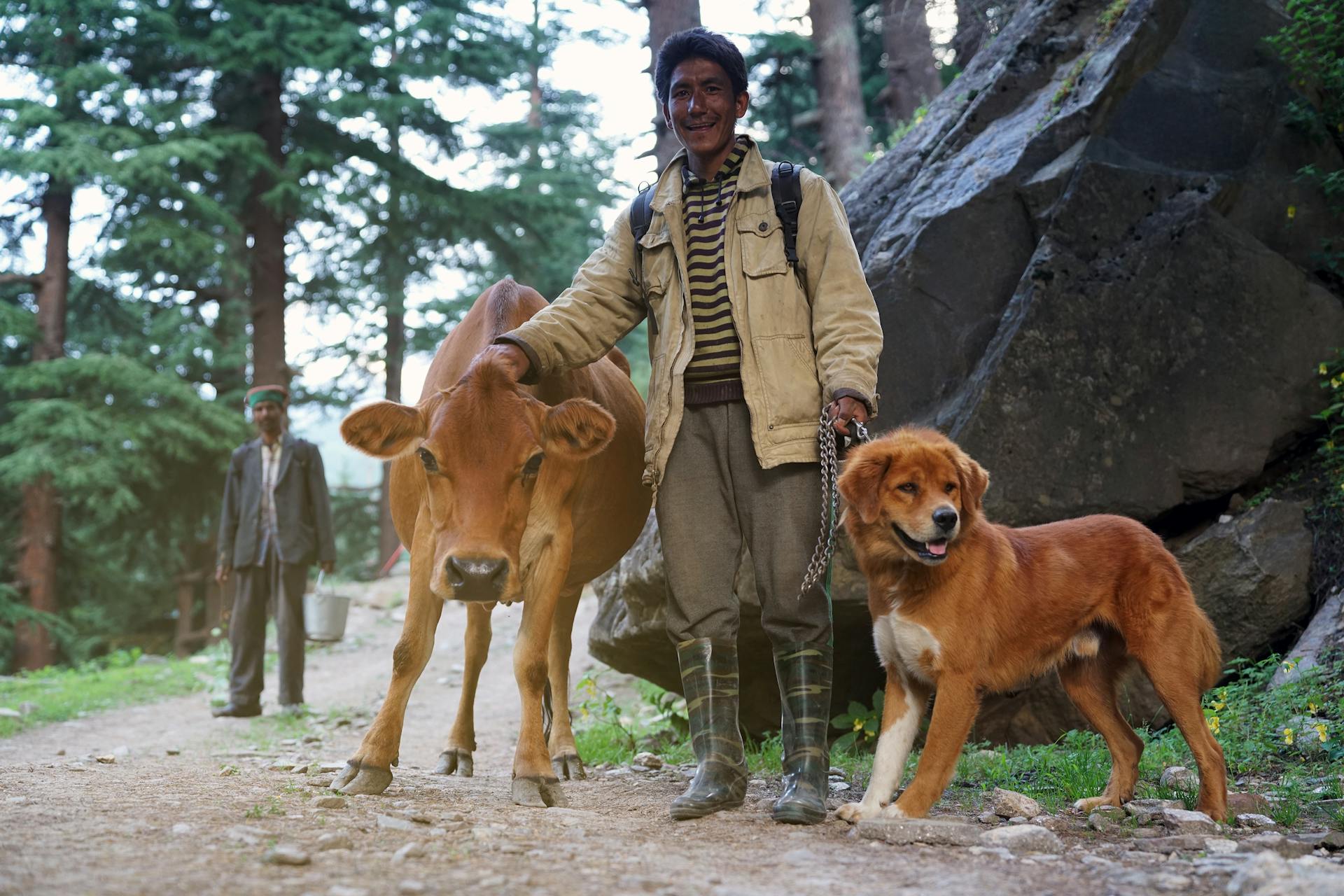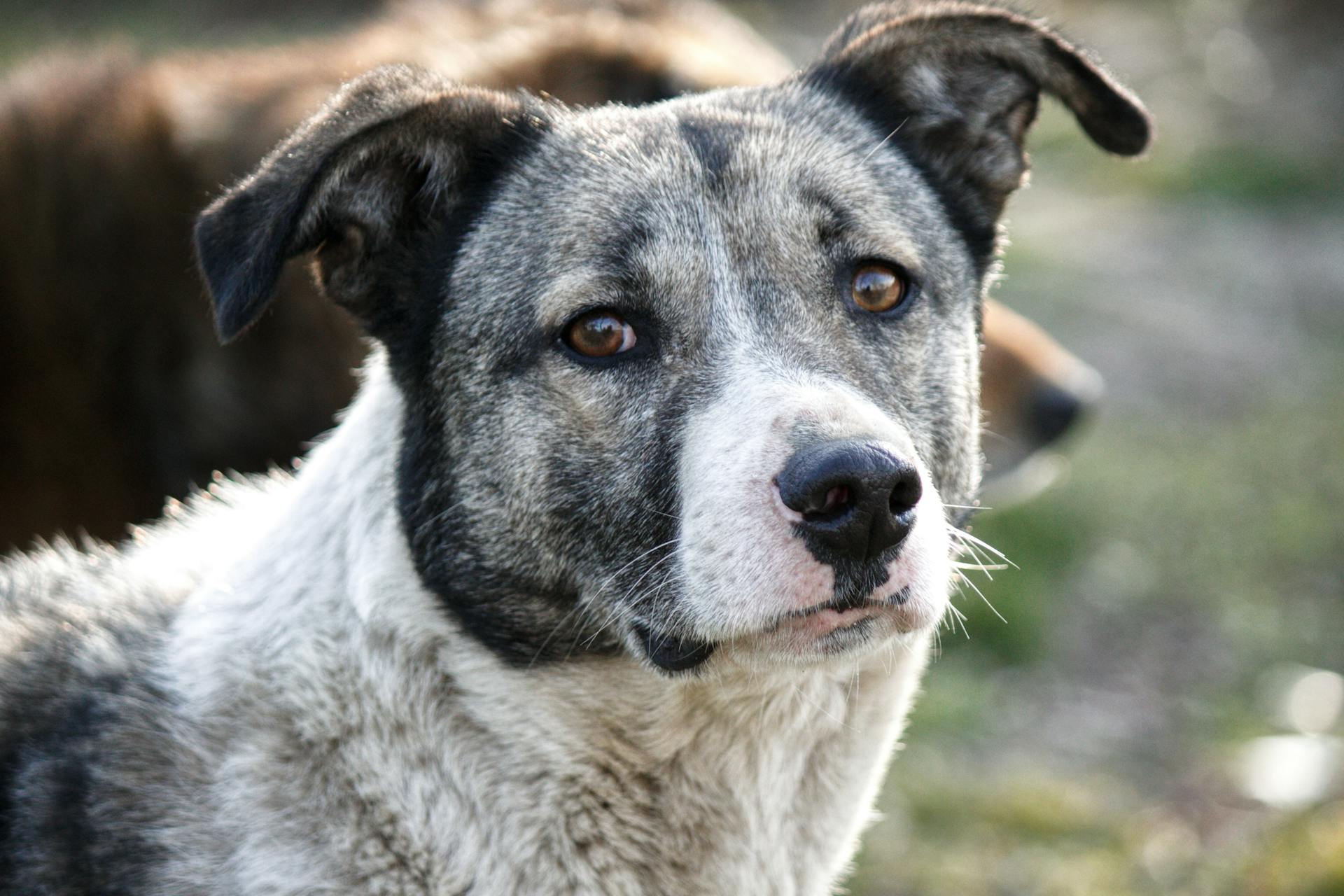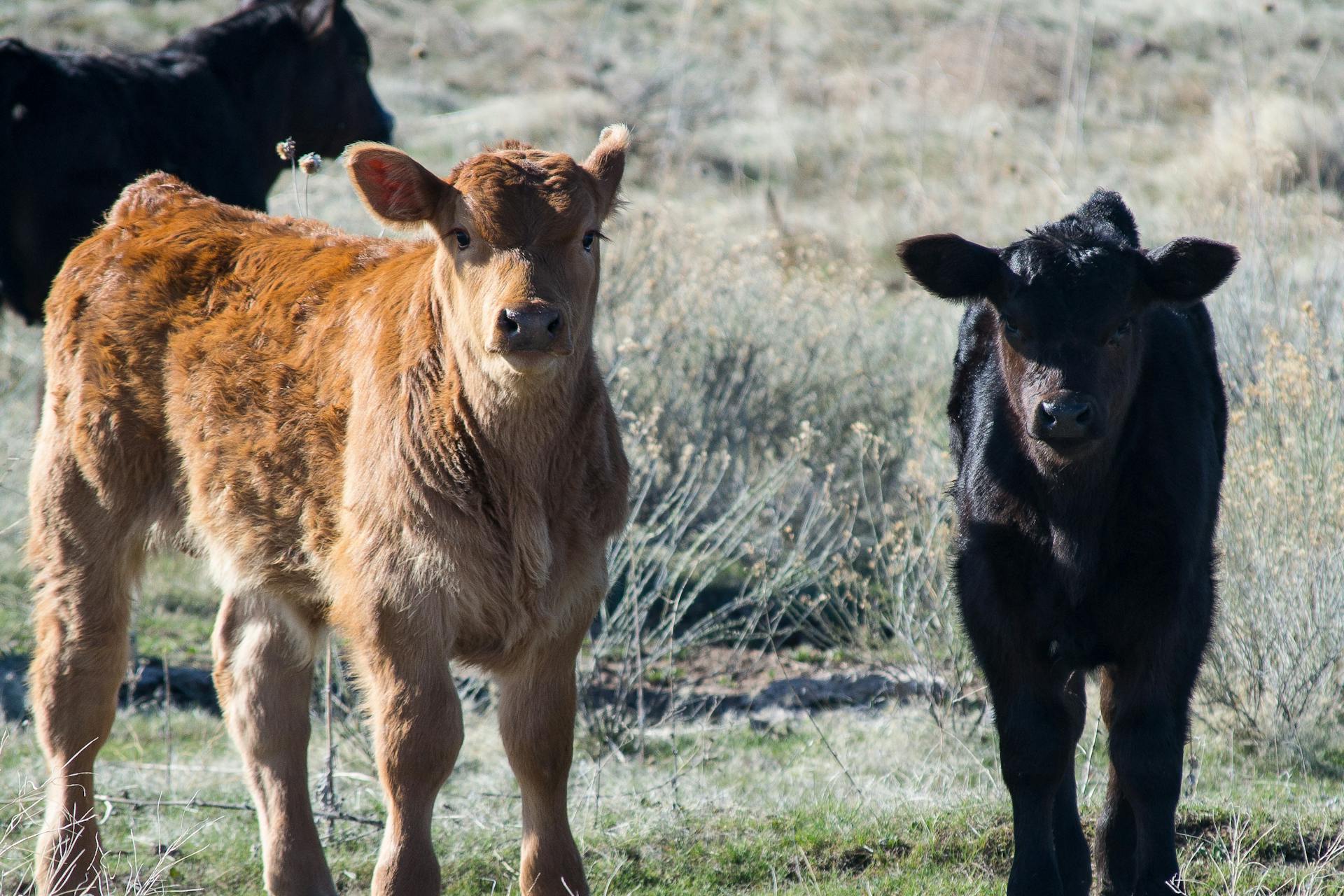
Cattle dogs are highly intelligent and energetic breeds that thrive on structure and clear communication. They require consistent, positive training from an early age to develop good behavior and prevent unwanted habits.
A well-structured training plan is essential for cattle dogs, with a mix of physical and mental stimulation to keep them engaged. This can include activities such as agility training, obedience exercises, and scent work.
Cattle dogs are naturally herding animals, so they have an instinct to chase and gather. This can be channeled into productive activities like herding or agility training, or it can lead to destructive behavior if left unmanaged.
With patience, consistency, and positive reinforcement, cattle dogs can learn to obey commands and behave well in various situations.
Understanding the Australian Cattle Dog
The Australian Cattle Dog, also known as the Blue Heeler, is a herding breed that thrives on high energy and mental stimulation.
With a sharp intellect and occasional stubbornness, this breed requires consistent training and socialization from an early age. A well-trained Australian Cattle Dog is a joy to have around, but it's essential to set realistic expectations and celebrate progress, no matter how incremental.
Some Australian Cattle Dogs may grasp commands faster than others, so it's crucial to tailor your training approach to your dog's unique personality and learning style.
Here are some common traits of herding breeds, including the Australian Cattle Dog:
- Australian Cattle Dog
- Australian Shepherd
- Bearded Collie
- Belgian Malinois
- Belgian Shepherd
- Bergamasco Shepherd
- Border Collie
- Cardigan Welsh Corgi
- German Shepherd
- Great Pyrenees
- Old English Sheepdog
- Pembroke Welsh Corgi
Understanding your dog's genetic predispositions is key to effective training, as every Australian Cattle Dog inherits certain traits from its ancestors.
Breed History
The Australian Cattle Dog is a breed with a rich history rooted in functionality. Originating in Australia, they were developed to herd cattle across vast terrains under challenging conditions.
Their ancestry is believed to involve a mix of wild Dingoes with early herding breeds brought over by English settlers. This mix has given them a strong work ethic.
A strong work ethic is one of the breed's defining characteristics, which is a result of their history as working dogs.
See what others are reading: Origin of Shetland Sheepdog
Genetics
Australian Cattle Dogs inherit a certain set of traits from their ancestors, which play a significant role in their behavior.
Recognizing and respecting these genetic predispositions can guide your training methods, ensuring they align with your dog's natural instincts.
Basic Training
Basic training is essential for Australian Cattle Dogs, and it starts with mastering basic commands like sit, stay, heel, and come.
Positive reinforcement, such as treats and praise, works wonders in training your Australian Cattle Dog.
Consistency is key in training, as is the use of positive reinforcement and rewards. This helps create a strong foundation for further training and ensures your dog's safety and control in various situations.
Break down the commands into small steps and gradually increase the difficulty to make training more effective.
Early socialization and obedience training are a must for Australian Cattle Dogs, and training should begin as early as possible to develop good habits more easily.
Establish consistency by using the same commands and gestures consistently, so your dog understands what is expected of them.
Mixed signals can confuse your dog, so ensure everyone in the household is on the same page regarding commands and training techniques.
Start with short, focused training sessions using positive reinforcement techniques to make training a positive experience for your dog.
Curious to learn more? Check out: Basic Dog Obedience Commands
Socialization and Training
Socialization is key to raising a well-adjusted Australian Cattle Dog. Every interaction with different people, animals, and environments helps mold them into confident and adaptable adults. Regular socialization from an early age is essential.
Positive reinforcement techniques like treats and praise work wonders in obedience training. Start with basic commands like sit, stay, heel, and come, and reward your dog appropriately when they obey. Consistency is key, and breaking down commands into small steps helps.
Australian Cattle Dogs can be wary of strangers due to their protective and herding instincts. Early exposure to diverse environments, sounds, and beings can mitigate potential issues and make them more adaptable. Gradually introducing new experiences ensures positive encounters and helps prevent fear and aggression.
Suggestion: Dog Socialization Training
Socialization for a Well-Rounded Dog
Socialization for a well-rounded dog is crucial for Australian Cattle Dogs. Expose them to various people, animals, environments, and experiences from a young age. This helps them develop good manners and become well-rounded dogs.
Here's an interesting read: Healthy Mind Canine - Separation Anxiety Training
Regular interactions with different people, animals, and environments mold them into well-adjusted adults. Start this process early, and continue regularly. Controlled interactions, such as supervised playdates with other dogs, trips to the park, or walks in different environments, are essential.
Gradually introducing them to new experiences ensures they have positive encounters. Socialization helps prevent fear and aggression, making your Australian Cattle Dog confident and adaptable. Positive reinforcement, like treats and praise, works wonders when teaching new behaviors.
Early socialization can mitigate potential issues, making them more adaptable and well-rounded adults. Australian Cattle Dogs can sometimes be wary of strangers, stemming from their protective and herding instincts. Building trust between you and your dog is paramount, especially for a breed as intelligent and sensitive as the Australian Cattle Dog.
Respect their boundaries, be consistent in your actions, and ensure that every interaction is positive and reinforcing. Socialization is not a one-time event, but an ongoing process that requires patience and dedication. By following these steps, you can help your Australian Cattle Dog become a well-adjusted and confident companion.
If this caught your attention, see: Welsh Corgi Adults
Each Dog Is Unique
Each dog is unique, and it's essential to celebrate their individual progress. Every Australian Cattle Dog breed shares common traits, but each dog learns at its own pace.
Some dogs may grasp commands faster than others, so it's crucial not to compare your dog to another. It's okay if your dog doesn't learn as quickly as a neighbor's dog.
For your interest: It's Your Choice Dog Training
Training and Motivation
Training your Australian Cattle Dog requires patience and consistency. Positive reinforcement techniques, like treats and praise, work wonders in motivating and encouraging your dog.
Consistency is key in training, and it's essential to establish a routine early on. Training should begin as early as possible, and puppies have a higher capacity for learning. Establishing consistency by using the same commands and gestures consistently helps your dog understand what is expected of them.
Positive reinforcement creates a positive association with desired behaviors and enhances the bond between you and your dog. It's crucial to remain calm and patient during training sessions, as dogs can pick up on our emotions. If you're frustrated or agitated, your dog might mirror that behavior.
Additional reading: Dog Training Positive Reinforcement
Signaling

Signaling is a crucial part of herding training, and using hand or whistle signals can greatly aid your dog in understanding commands. Consistency is key, so make sure everyone in your household is on the same page.
Practice makes perfect, and regular training sessions will help your dog learn these commands. It's a challenging order, but with patience and persistence, your pup will master it.
Young dogs can get excited when working with livestock, so ensure they're well-trained and responsive to recall commands. Otherwise, they might run around like a crazed lunatic chasing everything in sight.
Using a whistle can be an effective way to make corrections and control your dog in a herding scenario. Treats can help your dog become less fearful of the whistle's sound.
Whistles can startle your dog at first, but rewarding them with treats each time they become less fearful will help them get accustomed to it.
Additional reading: Fearful Dog Training near Me
Stay Calm
Staying calm is crucial when training your Australian Cattle Dog. It takes time to get your dog fully up to speed with herding, but it will eventually happen with practice.
Dogs can pick up on our emotions, so if you're frustrated or agitated, your dog might mirror that behavior. Stay calm and patient, even when training doesn't go as planned.
Remember, persistence is key, as each dog matures and progresses at different rates. Don't put too many expectations on your dog at the beginning, make it fun and be relaxed and encouraging instead.
It's essential to remain calm during challenging training sessions, take a break if needed, and come back with renewed energy. By staying calm, you'll help your dog stay focused and learn faster.
You might enjoy: Calm Dog Training
Positive Reinforcement
Positive reinforcement is a game-changer for training Australian Cattle Dogs. It works wonders, especially when using treats and praise.
Using positive reinforcement techniques is incredibly effective in motivating your dog. Reward desired behaviors immediately to reinforce their understanding of what you expect from them.
A fresh viewpoint: Example of Negative Reinforcement in Dog Training
Positive reinforcement creates a positive association with the desired behavior and enhances the bond between you and your dog. This is especially important when training a breed like the Australian Cattle Dog, which thrives on structure and purpose.
Consistency is key when using positive reinforcement. Mixed signals can confuse your dog, so make sure everyone in the household is on the same page regarding commands and training techniques.
To make the most of positive reinforcement, start early and establish consistency. Puppies have a higher capacity for learning and can develop good habits more easily.
Expand your knowledge: When Do Border Collies Calm down
Nourish Body and Mind
Australian Cattle Dogs are very athletic, active canines, so it's essential to provide them with good nutrition to meet their needs. A high-quality dog food, whether commercially manufactured or home-prepared with your veterinarian's supervision and approval, is a great starting point.
Exercise plays a significant role in their overall health, and Australian Cattle Dogs benefit from activities such as fetch, agility training, long walks, or even hikes. This helps channel their abundant energy in a fun way.
A balanced diet ensures they have the energy and mental acuity to respond well to training sessions. Treats can be excellent for training, but they should be given in moderation and factored into their daily caloric intake.
Australian Cattle Dogs need more than just a quick walk and playtime in the yard; they require a job to remain happy and healthy. This can be achieved by participating in dog sports or going on runs with their owner every day.
Frequently Asked Questions
How long can a cattle dog be left alone?
Cattle Dogs can be left alone for 1-2 hours, but prolonged separation can lead to destructive behaviors. Crate training can help minimize damage, but it's essential to explore alternative solutions to ensure your ACD's well-being.
Featured Images: pexels.com


